Y-12 Blog
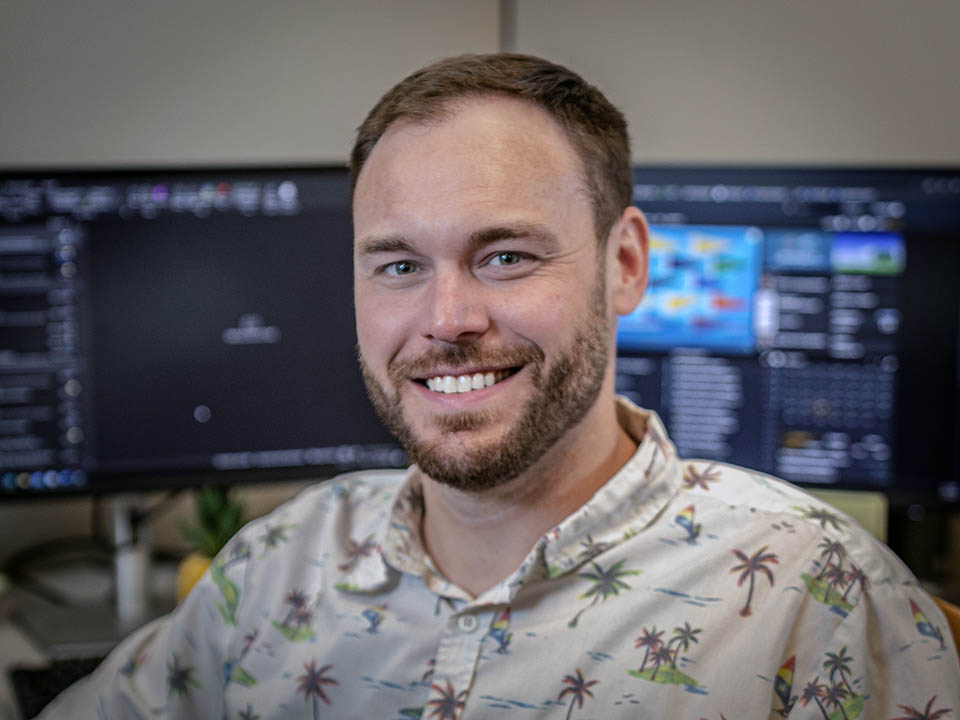
Take 5 minutes to learn about Christian G., of Production Integration. All views and opinions are the employee’s own and do not necessarily reflect those of CNS.
Christian G. came to Tennessee in 2023 with his family and little more than “hopes and dreams.”
That’s how he describes his family’s decision to travel halfway around the world for his internship at Y‑12.
While finishing a tour in Japan in 2023, Christian and his wife decided it was time to separate from military life and start the next phase of their lives. That began by connecting to the U.S. Department of Defense SkillBridge Program, which provides internships for transitioning military personnel.
When he received approval to start reaching out to companies, he knew what he wanted to do. “I wanted to remain in, or adjacent to, the nuclear power industry,” he said.
A native of Florida, Christian joined the Navy out of high school as a machinist mate in the Naval Nuclear Power Program. “Thanks for the fuel, Y‑12,” he said, chuckling. Y‑12 provides feedstock for the Nuclear Navy’s reactors.
Now at the other end of his Navy career, his knowledge of nuclear energy caught the attention of Steve P., Y‑12 Quality Modernization Program manager. At the time, the Analytical Chemistry Organization (ACO) was in the midst of a modernization. Steve wanted Christian to help with that transition.
It turned out to be a great decision.
“Christian’s dedication and results‑oriented actions, have been impressive,” said Steve.
Others noticed his skills and professionalism.
“Keep in mind, this was a new program being stood up at a time when ACO was having difficulty keeping the facility up to support mission,” said Hollie L., director of the Depleted Uranium, Manufacturing, and Quality Modernization Program. “It was a chaotic time, but Christian walked right into the fire, drinking from a fire hose, and was an immense help to Steve,” she said.
Amy W., senior director of Analytical Chemistry, added, “His Navy background certainly gives him a perspective on the high‑level mission of Y‑12; he is already leading discussions on mission needs for ACO. His most‑often used words, no matter who he is talking to, are ‘What can I do?’, ‘How can I help?’, ‘Would you like me to handle that?’”
Christian’s SkillBridge internship ended in August 2023. The following month, he left the Navy and accepted a job in Production Integration at Y‑12. “It’s been an extremely enriching opportunity as I’ve transitioned from military life into the civilian sector,” he said. “It’s also exciting to be able to continue serving my country through a new arm of our nation’s defense.”
Why are you mission success?
I have a results‑oriented mind‑set of get the job done right. This is in part from my upbringing and also my time in the Naval Nuclear Power Program. I immerse myself in the mission of my group and look for ways to make it better, faster, and more effective.
What is the greatest strength you bring to your organization?
I ask why we do things the way we do and where can we improve. What will make my organization’s mission easier to accomplish? With that questioning attitude, I push to overcome the inevitable unfavorable answers. I encourage those around me to continue moving through the challenges we face.
As an employee, how do you want to be remembered?
I would like to be remembered as someone who helped Y‑12 transition into the next phase of production capabilities.
Why is teamwork an important aspect when working at Y‑12?
The combined efforts of all groups within Y‑12 propel us to mission success. Combining the ingenuity and passion from each individual ensures every activity is executed to the highest level of quality.
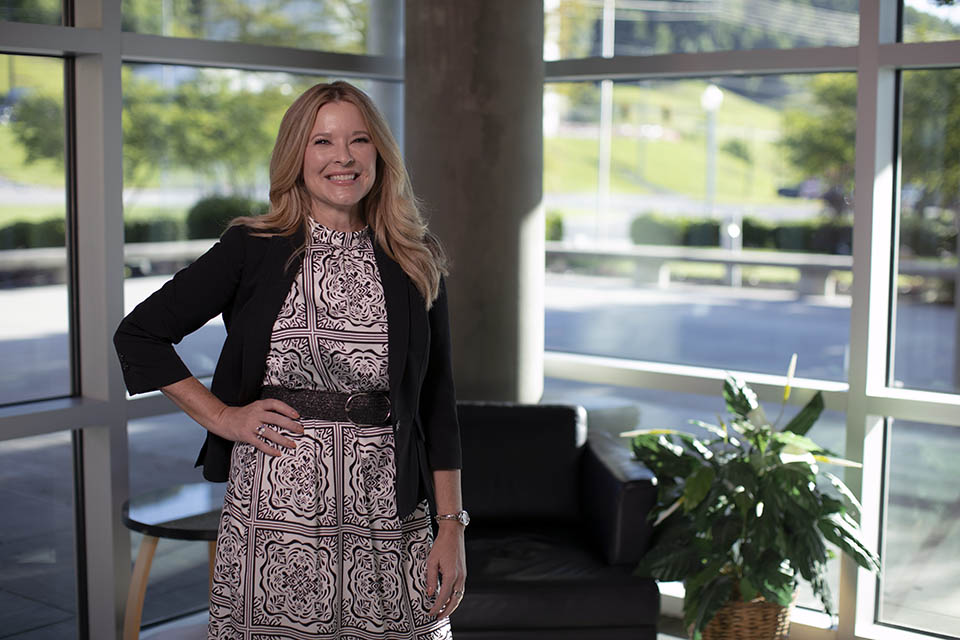
Take 5 minutes to learn about Brandi Reagan, recruiter for Mission Engineering. All views and opinions are the employee’s own and do not necessarily reflect those of CNS.
Brandi Reagan has an eye for future talent. As a recruiter for CNS Mission Engineering, Reagan is responsible for the recruitment and placement of top engineering talent — which she does through developing recruitment strategies based on programs’ needs. She also works with program leaders to forecast and plan for the engineering pipeline.
Recruiting in the engineering field is highly competitive, and open positions often require unique skills and experience, often making finding the right recruit challenging. Reagan attributes her success in fueling the engineering pipeline with top talent to the overall team mentality in the Mission Engineering organization. She explained that managers in Mission Engineering often look out for each other, and if one hiring manager sees a top candidate that isn’t a fit for their open role, they proactively alert other hiring managers of the candidate’s availability. Ultimately, Recruiting and Mission Engineering work together to ensure CNS will not fail in delivering the mission, and mission success begins with finding and hiring the best people.
Due to her continued success, Reagan was recently awarded the title “Recruiter of the Year” by the University of Tennessee’s Center for Career Development and Academic Exploration. Nominated by the University of Tennessee, Regan worked closely with UT’s Employer Advisory Board and continues to advocate for CNS as an employer of choice as well as engage with future talent to enable pipeline development.
Reagan links her success in recruitment to her previous sales leadership experience and sales knowledge. “Recruiting is sales, full stop,” she explained. “Knowing where to find candidates, introducing them to an opportunity, and then sharing my excitement about the company and overcoming any initial concerns, that is where I thrive.”
Why are you mission success?
I feel this mission in my bones. I want to find the best and help them understand why CNS is the place to be to make a difference. I think I can speak for all Pantex and Y‑12 recruiters when I say we appreciate our role in the mission. We understand that our hiring managers’ time is valuable, so anything we can do to decrease our time to hire, find the right talent, and support the organization, we will do it.
What has surprised you the most since joining CNS?
The comradery from everyone in various departments at all levels. Everyone I’ve encountered is always willing to jump in and help. There’s definitely a “Goonies never say die” attitude, and we pull together to make things happen. The appreciation I’m shown for what I consider is just doing my job still takes me by surprise.
What is your favorite aspect about your work environment? How does that aspect make you know the mission is being met?
The people I get to work with in both HR and Mission Engineering are why I wake up excited to go to work. We help each other, show grace when needed, and pitch in to ensure we do not fail. We meet the mission because there are no other options.
How have your problem‑solving skills grown as you’ve developed as an employee?
Staying creative and using critical thinking skills to see the problem as a whole and not just the portion I’m addressing, that has definitely sharpened while I’ve been here. Also, I think having a questioning attitude helps.
Who in your life has inspired you the most and why?
That has to be my nannie, aka grandmother. She was a homemaker, but she still kept herself educated with politics, sports, the economy. She didn’t let her circumstances limit her to what she wanted to learn. She was a strong Appalachian woman, and no one was going to tell her how to think.
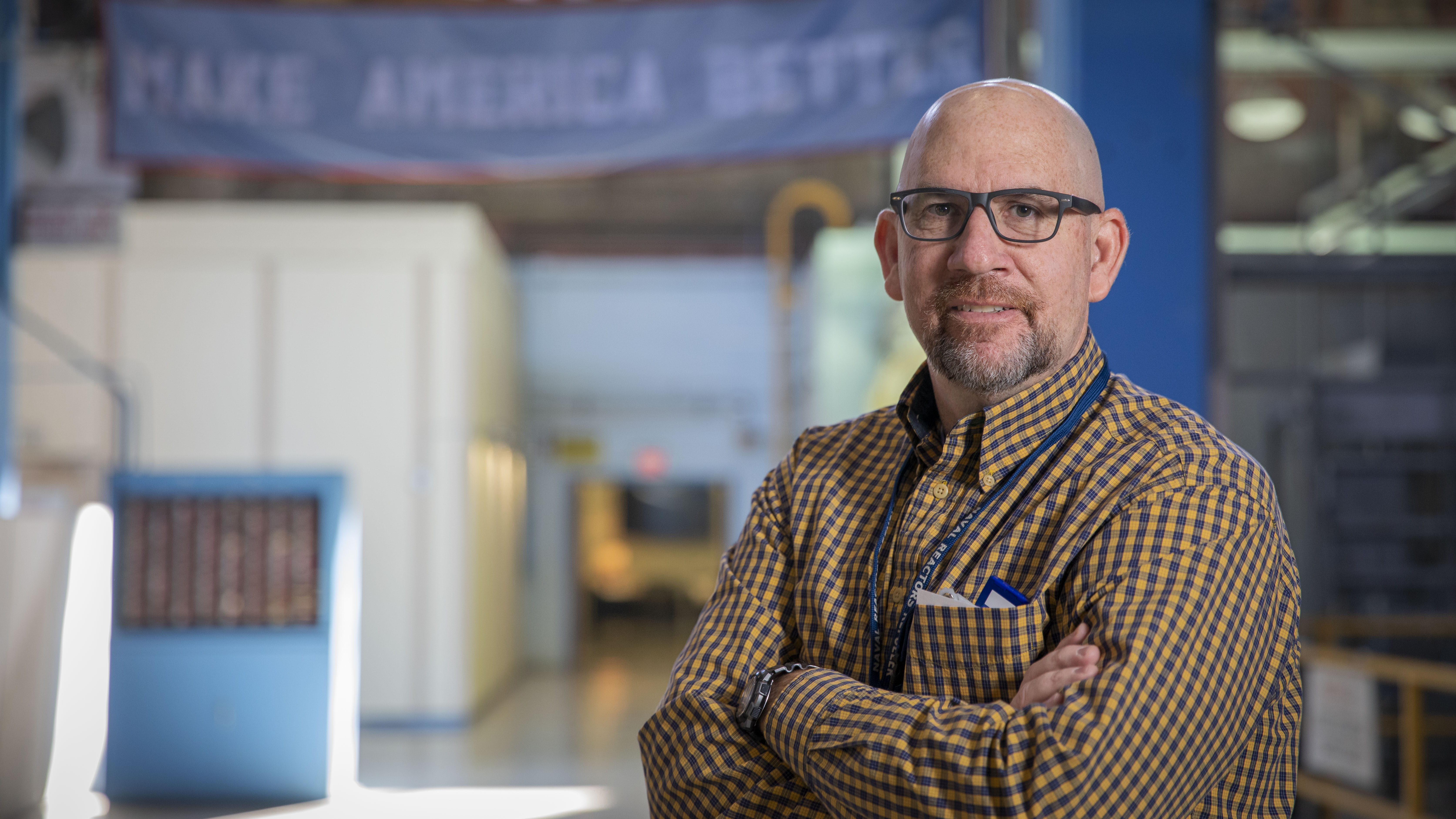
Take 5 minutes to learn about Sean L., Y-12 Nuclear Maintenance Services director. All views and opinions are the employee’s own and do not necessarily reflect those of CNS.
Sean L. brings experience as both an engineer and a naval officer to his job at Y-12.
Unlike for some people, Mondays don’t get him down.
“I love them,” he said. “Mondays are what set the pace for the entire week. If you have a great Monday, you will have a great week.”
He spends his work weeks as the director of Y-12 Nuclear Maintenance Services, which has a large presence on the site.
“We have about 440 people in this organization,” he said. “We pretty much do everything, everywhere. We are practically in all of the facilities in the valley. We maintain various machinery and equipment, perform new machine demos, revive older pieces, and install new technology. We make sure everything is operational and mission-ready to support the work.”
Sean has hit the ground running since he arrived at Y-12 in October of 2023. Before that, he was at Savannah River Nuclear Solutions in South Carolina, where he was manager of Quality Assurance and Assessments and NNSA Operations and Programs. He was also the manager for the Savannah River Tritium Enterprise, which is a part of the Nuclear Security Enterprise.
Although the work he did at Savannah River was important, it was much different than the scope of tasks at Y-12.
“It’s the complexity of the work and the integration of all of the missions in one location,” he said. “This was very surprising to me. When I was at Savannah River, it was about environmental management. It was cleanup-based. Coming from there to here is like going from junior high to college.”
Sean also brings to Y-12 his experience as an engineer, a naval officer, and a subject-matter expert in nuclear propulsion plant operation, construction maintenance, regulatory compliance oversight, quality assurance, and project management.
“I came into a great situation,” he said. “It doesn’t always happen that way. This group I work with is high-functioning and dedicated to achieving mission excellence. Every day, this team reels off win after win.”
Leading people is his passion. He added, “But it’s not just about me leading them but also about learning from them, and hopefully they are learning something from me. This creates a place where we can all grow and succeed.”
How has working for CNS changed or reinforced your thoughts on our mission (nuclear deterrence, managing the stockpile, etc.)?
Working here has definitely reinforced my confidence in the state of our stockpile. At Y-12, I see the people are going in the same direction. They are not sitting on the sidelines saying, ‘This isn’t my job,’ if something needs to done. I never knew before I got into the DOE system how many people have to come together to support the nation’s stockpile.
Why is it important we hold ourselves accountable in our daily tasks?
We have to own the things we do. We are accountable to ourselves and our production customers. When it comes down to it, we are accountable to the nation. We don’t have an opportunity to not get it right. We don’t work at Chick-fil-A––if you forget to put a pickle on a sandwich, it’s not that big of a deal. If we forget something here, that’s a bad day.
What is one thing your coworkers would be surprised to know about you?
I raise miniature goats. I love them. I have a little farm with a couple dozen of them. They are cute little guys. Can’t have a bad day when you’re outside with the goats.
What’s your top bucket list item and why?
I want to go to the Harley-Davidson Museum in Milwaukee on my motorcycle. That would be really cool. I used to do a lot of bike trips. I’ve ridden several thousand miles in a month. One of longest trips was from Newport News, Virginia to New York.
What work advice would you offer someone who is new to Pantex or Y-12?
Listen and always seek to understand [the situation, other perspectives, etc.] when there is a problem or an issue. That way, you can participate in the solution. Also, be open to the idea that there is a better way sometimes, and compromise isn’t failure. You might think you have the right answer, but you have to be open to alternative solutions.

Y‑12’s innovative and safer low temperature method for yielding lithium has the potential to change current methodologies.
Lithium (Li) has been a valued commodity to the battery manufacturing industry since the 1970s, but the Y‑12 National Security Complex (Y‑12) has valued lithium for the nuclear deterrence mission for decades longer. Unfortunately, the standard process to make lithium metal is energy demanding, environmentally harmful, and dangerous for personnel.
One Y‑12 inventor is trying to change that. John F., a senior chemistry specialist in Y‑12 Development, created and patented a safer low-temperature and chlorine‑free approach to lithium metal production that yields higher purity, efficiency, safety, and performance. John F. also serves as the Principal Investigator on a high‑temperature cell project at Y‑12.
Conventional lithium metal production methodologies require lithium ore to be processed into lithium chloride (LiCl). This extensive and energy-intensive process requires electrolysis at extremely high temperatures (over 800 degrees Fahrenheit) to extract lithium from a molten salt, resulting in high energy demand and the release of harmful toxins such as chlorine which harm the environment. Applying his experience with battery science, extractive metallurgy, and knowledge of nuclear fuel solvent extraction, Freiderich built a lithium metal production process that is much safer and environmentally friendly.
The new method is conducted at near room temperature with a byproduct of oxygen. This method can yield lithium with purity above 95% by weight, resulting in improved efficiency, performance, safety, sustainability, and 92% less energy demand compared to high‑temperature cell methods, with the possibility to go directly from ore or raw lithium to metal. This new process could drastically reduce the environmental impact by removing caustic leaching steps with their accompanying energy requirements and molten salt bath.
“This technology has the possibility to eliminate the industrial process of roasting lithium-contained ores, like spodumene, which is a 900 °C process to produce lithium materials,” reveals John F. “While not fully explored yet, this technology also could potentially reduce the overall number of steps required by Y‑12 and the lithium industry to process Li materials.”
“The Plant Directed Research, Development, and Demonstration (PDRD) program has the unique capability to explore high‑risk and novel methods to modernize and improve our production plants,” states Mike E., Y‑12 PDRD Program Manager. “The low‑temperature, chlorine‑free lithium production method perfectly fits that mission space and has the potential to transform Y‑12’s current lithium manufacturing process.”
Y‑12 is partnering with Novae Metals through FedTech’s Emerging Tech Studio to commercialize the technology. With the commendation of the need to create a U.S.‑based supply chain for lithium and the exponential demand growth for the commodity by 2030, this new method is a potential game changer for Y‑12, the future of lithium battery production, and global energy.
“If successful, this technology can increase the purity of lithium metal with a smaller footprint, enhance worker safety, and minimize impact to the environment,” said Mike E. “Technologies such as this are what the originators of PDRD had in mind when first legislating this funding source to improve our production facilities, and it is exciting to enable the possibilities this process could bring.”
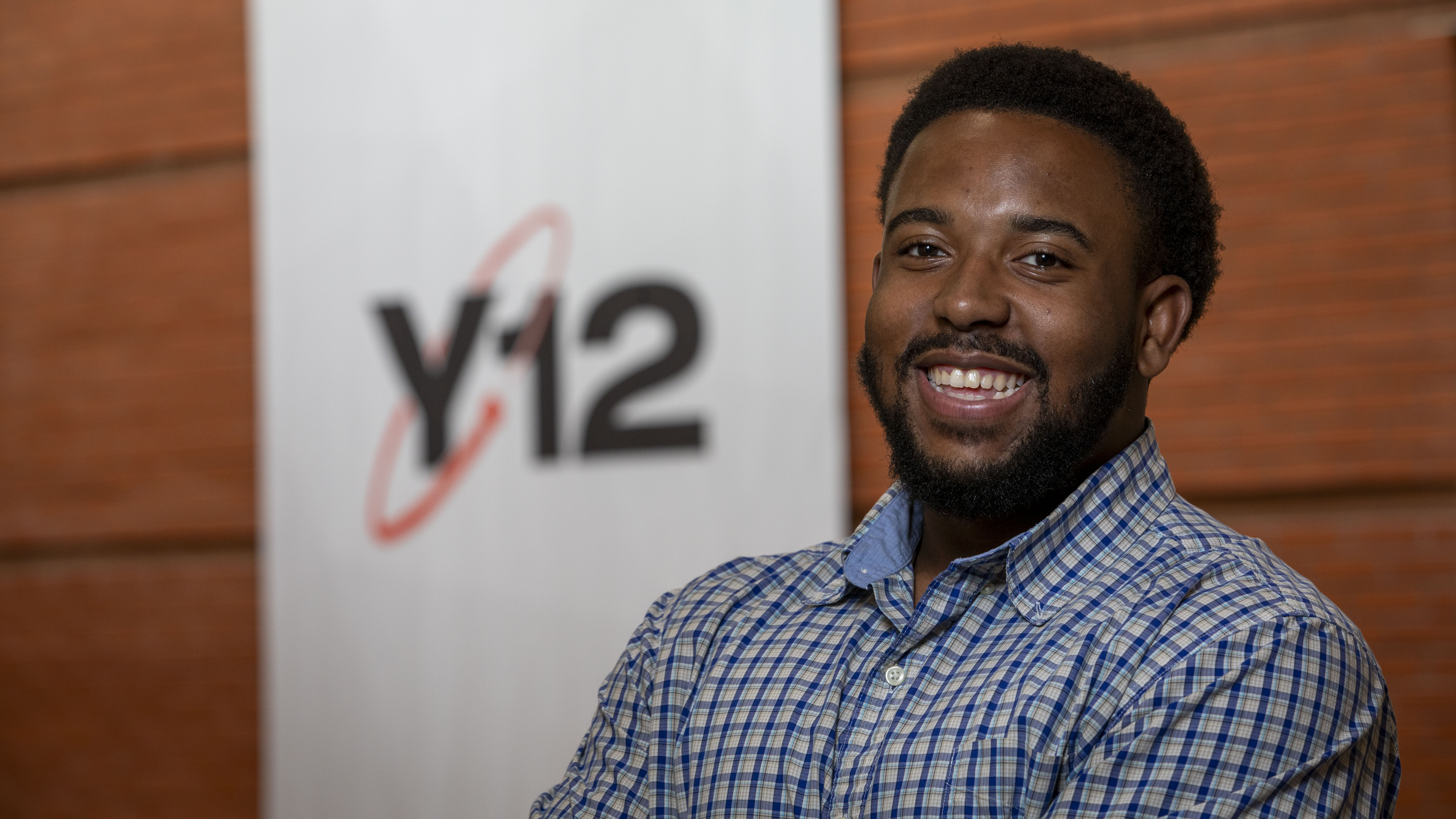
Jovon H. interned at Y-12 in the summer of 2023 and is now working in Y-12 Infrastructure.
Pantex and Y-12 recently welcomed a total of 87 interns from 31 different colleges and universities across the nation. These interns will spend 10 weeks learning about the CNS sites and their missions. They will engage in intense training and learning from their host organizations, culminating in a final project that they will share at the Intern Expo on Tuesday, July 23.
Internships offer students a chance to apply abstract knowledge to form concrete experience. Because of the unique missions at Pantex and Y-12, internship experience gives these graduates an upper-hand in landing a full-time position at one of the sites. From the 2023 intern class, nearly 40% have become full-time employees, with more planning to seek a position at one of the sites after they graduate.
Jovon H. interned at Y-12 in the summer of 2023 and is now working in Y-12 Infrastructure.
“I really enjoyed my internship. I made countless amounts of memories that will be cherished and carried with me through my life,” said Jovon. “Having the luxury of surrounding yourself with people who care about your well-being and have similar missions, goals, and ambitions that further assist you in your career development is not something you find at every company.”
Jovon said that networking was a valuable skill he took from his internship. He truly applied the saying, “It’s not so much about what you know as it is who you know.”
“My internship helped me have the capacity and flexibility to build quality relationships with people,” he said. “If no one knows your name, passions, ambitions, and/or face, how can others assist or know what your ultimate goals and ambitions are as an employee?”
Another former intern, Darby L., who interned at Pantex in 2022 and received a job offer with Pantex Career One after graduation, said that as an Amarillo native, she grew up thinking it would be great to work at Pantex someday.
“Getting to come out to Pantex while I was still in school helped me determine if I wanted to continue working at Pantex as a full-time employee,” Darby said. “I enjoyed the friendly community of Pantex as well as the overall mission statement.”
According to Darby, one of the most important skills she learned from her internship that she still uses in her job now is the ability to communicate effectively.
“In my job, I am always meeting new people as well as learning new things,” she said. “I learned the importance of asking for help when needed as well as asking questions. I have applied the communication skills learned from my internship into my everyday tasks.”
To the incoming interns, Darby offered this advice to help them during their internship: “I’d recommend building connections with your employers and fellow interns.”
Jovon echoed the importance of connecting with other people during an internship.
“Communicate and collaborate with each other,” he said. “Coming in, everyone is on the same playing field and is relatable. Also, seek a mentor in your organization who you look up to, and don’t be afraid to fail or ask questions.”
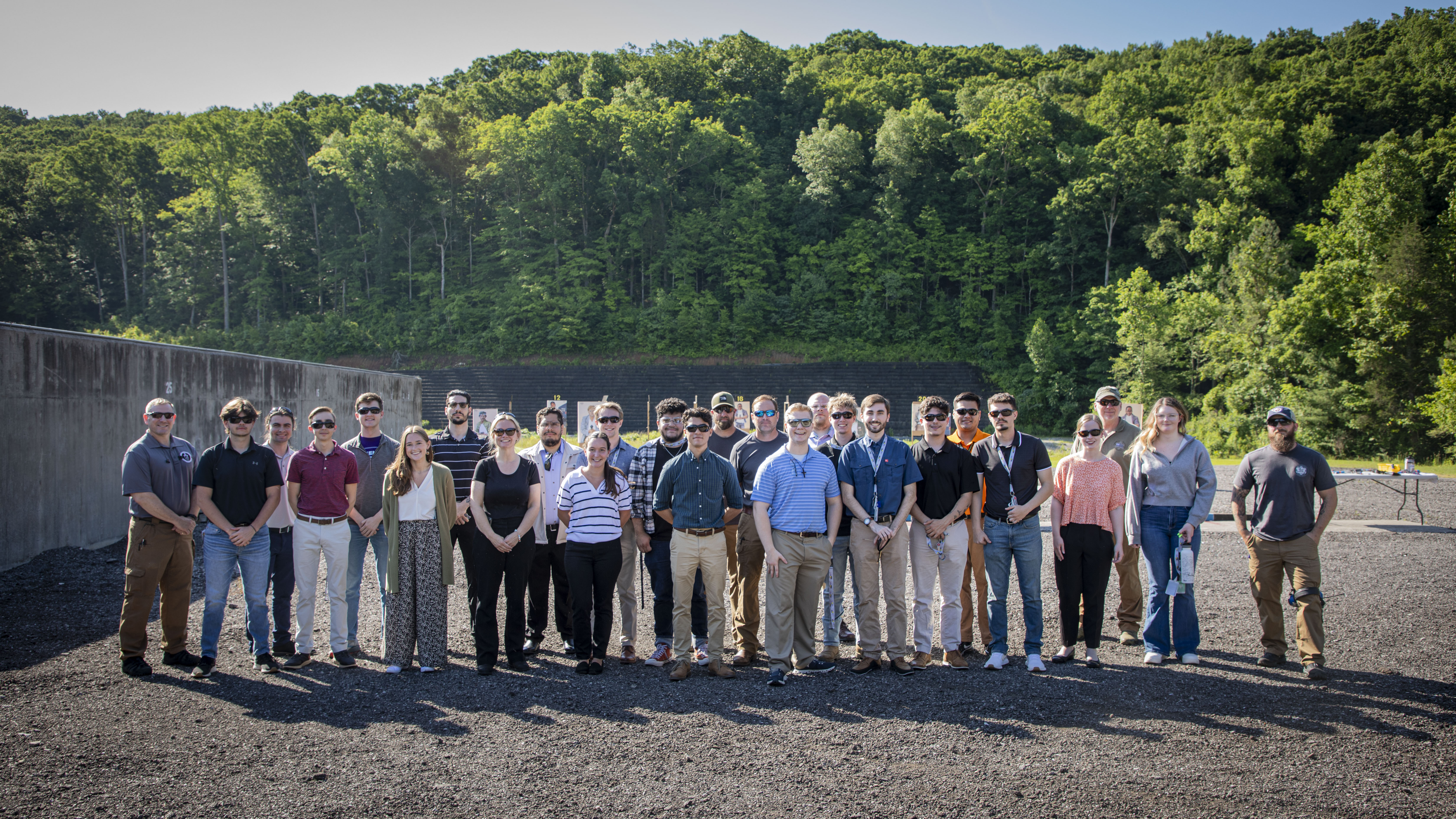
Y-12 recently welcomed 49 summer interns from 23 different colleges and universities across the nation.
